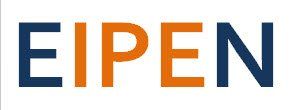What are the key competences?
EIPEN has opted for five key competence areas, which are applicable in caring for individual clients and their networks, but also in working with client groups and population-wide interventions. Three areas are core activities in practice: professionals and team members consult and collaborate, plan and manage, and refer and transfer. The other two areas concern important activities for quality management: professionals and team members handle issues and opportunities, and reflect and evaluate, in order to improve and innovate.
Competence areas are operationalized in concrete behavioural indicators, resulting in a handy sheet with 30 specific criteria. The achievement can be assessed on a five-point scale, and progress can be monitored.
The model can be used in clinical practice but also in education and training. The indicators can function as benchmarks and learning outcomes in study programmes and training courses. Institutions can use it for competence development of health care workers. Starting professionals can set a path for further developing their interprofessional expertise. Professional bodies can use the model to map professional profiles.
